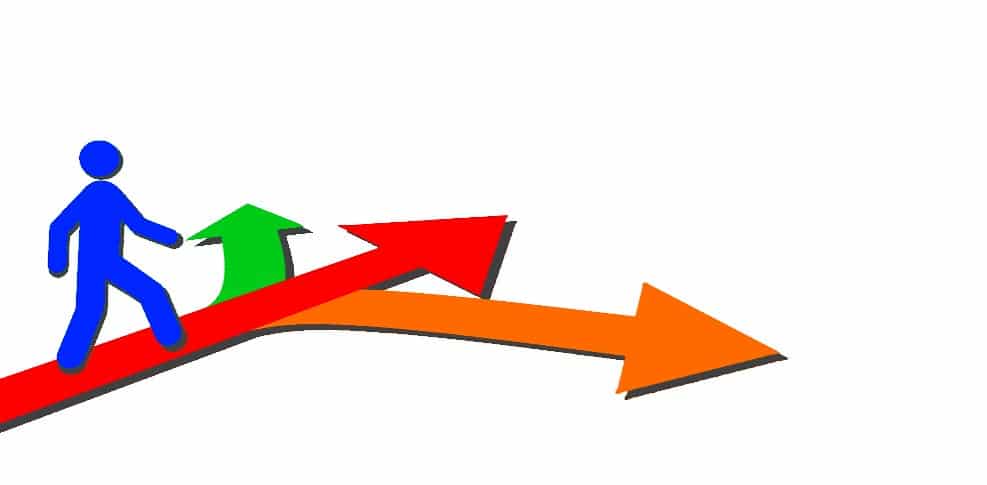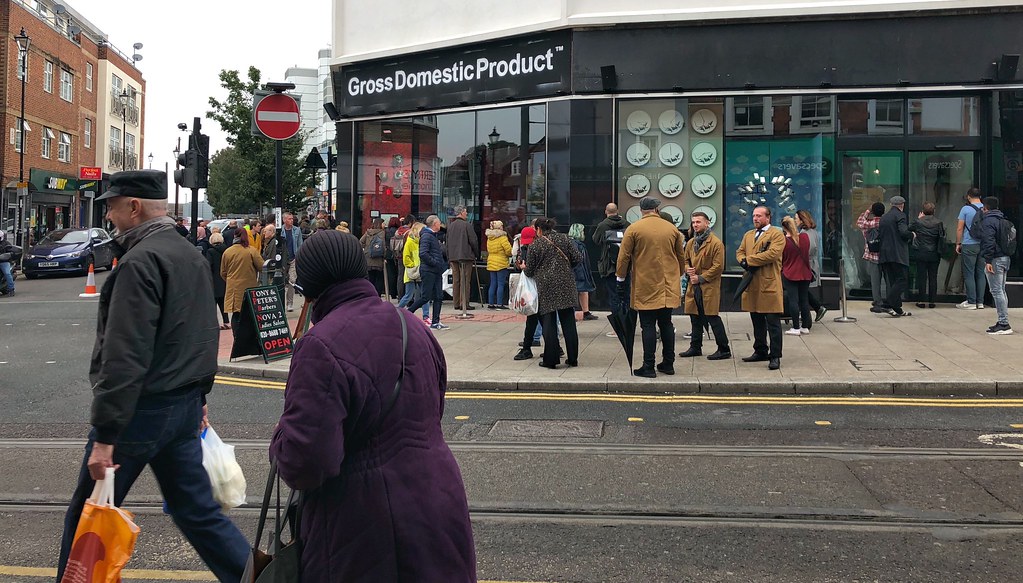
How Using GPI Leads to Healthier Economic Choices
by Ken Pentel
Incentive leads to behavior – which shapes policy-making and investments
The Danger of Using the Gross Domestic Product (GDP) in Relation to Human Migration from Rural to Urban Areas and How the Genuine Progress Indicator (GPI) Can Remedy This.
The main focus of the Ecology Democracy Network is to reverse ecological overshoot. To remedy this, the Network identifies the global economy, the way we vote at the state and national level, and who influences our government, as the main reasons for the problem. But for now I will focus on the economy.
The GDP is the primary global signal used for measuring the health of the economy. If GDP improves, all is good, and if we have two negative quarters of GDP it is considered a benchmark that we are in a recession. So, GDP is a growth imperative; quantity over quality.
At this time we are accelerating overshoot and I consider the GDP a major contributing factor for this.
The Rural – Urban/Suburban rift
I will only be able to offer a brief insight into this subject, but will offer more in the future.
According to the Minnesota State Demographer, in 1940 Minnesota had approximately 52% of its population living in rural areas. This is now approximately 17%. And that trend will continue, adding one million people to the Twin Cities metro region by 2040. [1]
This trend is not exclusive to Minnesota and the United States. In 1950, 30% of the human population on Earth was urban and by 2040 it will be about 66%, and at this time approximately three million people are being added to cities on the planet each week. [2]

I feel this is a concern because of the way we do accounting in the GDP, we undervalue local and rural economies and overvalue urban/suburban economies. As we add more people to the metro region we require external resources for survival, such as energy, food, and transportation needs, etc., and most people are disconnected or unaware of the consequences of these dependencies. Since money exchanges, consumption, and growth are benchmarks for a successful GDP, this activity increases in value at an accelerated rate. As mentioned above, GDP doesn’t value the more rural way of life of self-sufficiency, self-reliance, and invisible, non-monetized activity nor the ecological services that are in rural areas, such as pristine water, diversity of tree types and our fellow creatures, such as wildlife.
This rural depopulation leads to a higher cost of living and a growth economy, which, over time, gives rural communities in Minnesota and around the world limited economic choices that attract extractive corporations associated with the mining, agriculture, and timber industries. For example, when Glencore (PolyMet) offers the possibility of $650 million to an economically stressed region of northern Minnesota [3], those living in those regions see the jobs created as a chance to keep young people living in the region and see the money as a way to help with the myriad of other issues they are facing, such as housing, health clinics, retail, etc.
No, most of these people do not want contaminated water, but if they want to keep their communities intact they are willing to take these limited choices because, wittingly to some and unwittingly to most, the way we measure the economy puts people struggling in rural communities at a structural disadvantage. The voting system and who influences the government also contributes to this.
At a later time I will try to show more specifically how stress in ballooning metropolitan region populations can be reduced using the GPI, but for now I will try to show how the shift from the GDP to the GPI can help increase healthier economic choices and reduce some of this stress in rural economies.
Using GDP, a forest is only valuable when it’s cut and turned to product like timber or chip-wood, while with the GPI the forest would be valuable in and of itself: fixing soil and carbon, filtering water and air, and providing habitat for birds. So ecological services that were not visible in the GDP are now in the GPI. As a result, what is valuable is now valued. Legislators have a more accurate accounting to evaluate the ecological health of the state and apply tax incentives for someone in rural regions to retain or increase forest fertility and wildlife corridors inherently maintaining the health of the ecosystem.
And even though we already have some good “patchwork” programs like the Conservation Reserve and Enhancement Program (CREP) to protect sensitive lands, water, and wildlife, the GPI would meet the scale of the problem of deforestation and loss of diversity.
All of this reduces the need for remediation from private companies, non-governmental organizations, or government agencies, which in turn reduces the cost of living, diversifies, and stabilizes the rural economy. This leads to more of a steady-state or ecology-based economy.
As I have mentioned before, one of the areas that the GDP and GPI differ is with “defensive expenditures”. These are things we spend money on to protect us or save our lives, such as locks on doors, water filtration, and military weapons. The GDP recognizes these expenditures as a credit–a good thing–and generally the GPI recognizes them as a cost–a burden.

Potential GPI Impacts on Energy Production
So, for example, Minnesota sends about $15-17 billion out of the state each year to buy coal, oil, uranium, gas and big hydro. When we bring these fuels into the state there is all the remedial activity such as permitting, monitoring, waste treatment that are performed by government agencies. This applies to the private and civil sector too. These involve organizations such as the Minnesota Pollution Control Agency (MPCA), Minnesota Public Utilities Commission (PUC), Department of Agriculture, Minnesota Department of Health (MDH) and the Metropolitan Council, plus health impacts and medical treatment. Using the GDP, these expenditures are seen as a positive on the spreadsheet because the GDP just registers any of this money spent as a credit. Using the GPI, these expenditures would be a cost.
Not only does the GPI provide more accurate accounting, but when we shift from a credit to a cost on the spreadsheet this changes incentive, behavior and policy, and then it becomes less attractive to send energy dollars out of our local region for costly fuels. The natural trend when using the GPI is for efficient and renewable energy on a local level, because energy prices would then more accurately reflect the cost of the fuel. This then reduces the cost of living by reducing government, taxes, and regulation and enhances efforts towards sustainability.
In addition, Minnesota is approximately 30% efficient in energy transmission from facilities like Sherco, Prairie Island and Monticello, as we lose about 60% of the energy as heat at the power station and about 10% on transmission lines and transfer stations. To put this in perspective, Germany as a country is 90% efficient in energy transmission. But the GDP only recognizes how much energy or megawatts are produced at the facilities, so the waste is seen as a credit or a positive and there is no incentive to change it. The GPI would recognize this inefficiency in transmission from the power station to our homes, businesses, and institutions as a cost creating the incentive to bring energy production closer to where it’s used creating energy self-reliant structures.
As the price for energy starts to reflect the cost, this will inherently localize billions of dollars throughout the state. Bringing production closer to where it’s used lends itself to providing the same service using substantially less energy and hiring installers, maintenance, and repair locally keeps energy dollars circulating in the community. A uranium dollar may recycle locally 3 times, but a local energy dollar, which is more efficient and renewable, may recycle locally 6-10 times!
Now hundreds of millions of dollars start to flow to the rural regions, such as Wadena, Lyon, Hubbard, Grant, Red Lake and Aitkin Counties, and these become more resilient energy economies, helping reduce stress by adding long-term economic diversity, lowering the cost of living, and stabilizing population migration.
At a later time I hope to show – in a similar fashion – how the GPI applies to transportation, land-use, population growth, economic equity, gender balance, and how we grow our food.
Genuine Progress Indicator, Utah Population and Environment Council (UPEC)
The Utah General Progress Indicator (GPI), 1990 – 2007
1. Greater Minnesota: Refined and Revisited
Minnesota State Demographic Center – Department of Administration – January 2017 (Back).
2. Urbanization and the Mass Movement of People to Cities
by Bret Boyd (Back).
3. PolyMet receives $14 million in capital from Glencore
by Evan Ramstad (Back).